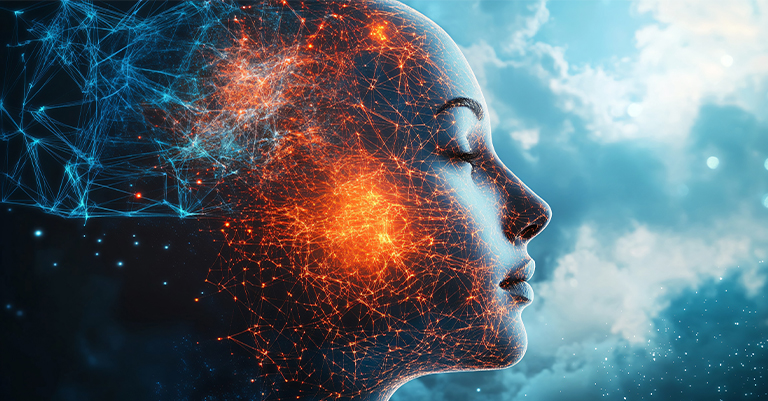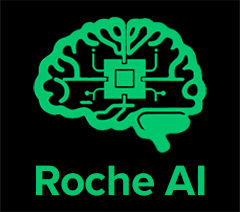Discover How Machines Learn Without Labels: Your Complete Guide
Have you ever wondered how Netflix knows what movies you might love? Or how Amazon groups similar products together? The answer is unsupervised learning – a powerful type of machine learning that identifies hidden patterns in data independently.
This method differs from supervised learning in several ways. First, unsupervised learning works with raw data that has no labels. Second, it doesn’t require examples to follow. Instead, it learns like humans do. Lastly, it observes and finds connections between seemingly unrelated pieces of data.
In this guide, you’ll learn everything about unsupervised learning. We’ll examine the different types of unsupervised learning and its various applications. We’ll also explore how it fits into the overall world of AI. By the end, you’ll understand why this technology is essential for data science. You’ll also learn how to apply these techniques in your own work.
This guide is suitable for both beginners and experts. It offers practical tips that you can apply immediately. Are you ready to explore the exciting world of pattern discovery and intelligent machines? If so, let’s go!
What Is Unsupervised Learning?

Unsupervised learning is a method that enables computers to identify patterns in data. The computer performs this task without any assistance or guidance. There are no “right” answers to follow. Instead, the computer analyzes the data independently and tries to find meaningful patterns.
Think about exploring a new city without a map. You look around and see different areas. Then, you notice which parts look similar and group them in your mind. This is precisely how unsupervised learning works. The computer looks at data points. It finds groups and connections.
This method works great when you don’t know what to look for. It often finds amazing things that people miss. For example, it might study customers and find new buying patterns. Then, businesses can create more effective marketing plans.
The main benefit is discovery, not prediction. Supervised learning tries to guess what will happen next. However, unsupervised learning finds hidden patterns that already exist. This makes it a powerful tool for people who work with data.
Types of Unsupervised Learning Algorithms
Unsupervised learning has several different methods. Each method works best for certain types of data tasks. Learning about these types helps you pick the right one for your project. Also, each type has special benefits based on what you want to do.
There are three main types you should know. These are clustering, association rule learning, and dimensionality reduction. Some newer methods like generative models are becoming popular too. But these three main types are the building blocks of most unsupervised learning work.
Let’s look at each type closely. This will help you see how they work in real life and what benefits they offer.
Clustering: Finding Natural Groups
Clustering algorithms put similar data points into groups. They look at what makes data points alike. For example, you might group customers by how they shop. You could also group genes by how they work. This shows you the natural divisions in your data.
There are popular clustering methods you can use. K-means, hierarchical clustering, and DBSCAN are the main ones. K-means works great for round groups. DBSCAN is better for weird shapes. Hierarchical clustering makes tree-like pictures. These pictures show how groups connect to each other.
Think about an online store looking at customer data. Clustering might find different types of shoppers. You might see bargain hunters, luxury buyers, and impulse shoppers. With this info, marketing teams can make better ads for each group.
Association Rules: Discovering Relationships

Association rule learning finds connections between different things in your data. The best example is market basket analysis. This looks for patterns like “People who buy bread also buy butter.” Stores use these insights to decide where to put products. They also use them for recommendations.
These algorithms look for “If A, then B” patterns. Netflix uses association rules to suggest movies. It looks at what you watched before. Amazon does the same thing. It recommends products that people often buy together.
Some connections are stronger than others. We measure this with support, confidence, and lift. These are special metrics that show how strong a pattern is. You can use these to filter out weak connections. Then you focus on the patterns that really matter.
Dimensionality Reduction: Simplifying Complex Data
Dimensionality reduction takes data with many features and makes it smaller. Think of it like taking a thick book and making a short summary. You keep the important parts but remove the extra stuff. This helps when your data has hundreds or thousands of features. It also helps you see complex data in simple pictures.
Principal Component Analysis (PCA) is the most common way to do this. It looks at your data and finds the most important parts. You can shrink your data while keeping most of what matters. This makes everything faster and easier to work with.
Another popular way is called t-SNE. It’s really good at making pictures from complex data. Scientists use it to turn gene data into simple charts. Businesses use it to show customer habits in ways anyone can understand. These pictures help people see patterns they might miss in numbers.
How Unsupervised Learning Actually Works

The unsupervised learning process starts with raw data that has no labels. Unlike other methods, there’s no right answer to find. Instead, the computer looks for hidden patterns or connections in the data itself.
First, the computer looks at all data points with no ideas about what it should find. Then, it uses math to measure how similar or different things are. For example, clustering methods calculate distances between data points. They use different ways to measure these distances.
The process keeps getting better over time. At first, the computer makes smart guesses about patterns. Then it changes these guesses based on what it sees in the data. This keeps going until the computer finds patterns that stay the same.
Checking if the results are good is hard. There’s no “right” answer to compare against. So people use special scores to judge the results. For clustering, they might use silhouette scores. These scores show how well data points fit in their groups. For making data simpler, they use explained variance. This shows how important information they kept. Also, experts in the field help decide if the patterns make sense.
Real-World Applications That Matter
Unsupervised learning powers many apps you use every day. It changes how companies learn from their data. These methods solve real problems in many industries. They create value that touches your daily life in ways you might not notice.
From the movies Netflix picks for you to fraud alerts from your bank, unsupervised learning works behind the scenes. Let’s look at how different industries use these powerful tools to make life better and business smarter.
Healthcare and Medical Research
In healthcare, clustering helps doctors find patient groups with similar symptoms. It also finds groups that respond to treatments the same way. This leads to better medicine for each person. For example, cancer doctors group patients by how their tumors react to different drugs.
Gene research uses these methods to study diseases. Scientists look at thousands of genes at once to find patterns. They find which genes work together and which ones might cause problems. This helps create new treatments and predict health risks.
Mental health doctors use clustering to understand different types of depression. Each group might need different treatments. This helps doctors pick the right therapy for each patient faster.
Medical imaging also benefits from these tools. Computers can group similar brain scans to help find diseases like Alzheimer’s early. This gives patients and families more time to plan and get treatment.
Finance and Banking

Banks use unsupervised learning to catch fraud before it hurts customers. The system learns what normal spending looks like for each person. When something strange happens, like buying expensive items in another country, the system sends alerts.
Credit card companies group customers by how they spend money. Some people buy groceries and gas regularly. Others make big purchases rarely. This helps banks offer the right credit limits and products to each group.
Investment firms use these methods to find hidden patterns in stock market data. They group stocks that move together. They also find unusual trading patterns that might signal good chances to invest.
Insurance companies look at claims data to find fraud patterns. They look for groups of claims that seem suspicious compared to normal patterns. This helps keep insurance costs lower for everyone.
Technology and Social Media
Search engines like Google use clustering to group web pages by topic. When you search for “dogs,” the system knows to show pages about pets, not hot dogs. This makes search results much more useful.
Social media sites find communities of people with similar interests. Facebook suggests friends based on mutual connections and shared activities. Instagram groups photos by content to help you find what you want to see.
Music services like Spotify create playlists by grouping songs with similar sounds. They also find users with similar music tastes to make better suggestions. This helps you discover new songs you might love.
Video sites group viewers by what they watch. YouTube suggests videos based on these viewer groups. This keeps people watching longer and helps creators reach the right audience.
Retail and E-commerce
Online stores study what people buy together to decide where to put products. If people often buy chips and soda at the same time, stores put them near each other. This makes shopping easier and helps stores sell more.
Amazon’s recommendation system uses these methods to suggest products you might like. It groups customers by what they buy and groups products by what they have in common. This creates the “people who bought this also bought” suggestions that help drive many sales.
Stores also group products by how quickly they sell. Some items fly off the shelves while others sit for months. Grouping fast sellers together and slow sellers together helps with ordering decisions. It also helps organize warehouses better.
Setting prices works better when stores understand their customer groups. Some customers want the best quality no matter the cost. Others always look for the cheapest option. Stores can set different prices for different types of customers.
Manufacturing and Quality Control
Factories use unsupervised learning to spot bad products before they leave the building. The computer learns what good products should look like. When it sees something that looks wrong, it alerts a human worker to check it. This catches problems before customers get faulty items.
Machines in factories create lots of data from sensors. This data gets grouped to predict when machines might break down. Workers can fix problems before they happen. This saves money and keeps the workplace safe for everyone.
Companies also use these methods to rate their suppliers. They group suppliers by how good they are at delivering on time and making quality products. This helps companies pick the best suppliers for different jobs.
Food companies use clustering to make sure all their products look and taste the same. The system checks things like color, size, and weight. If a batch of cookies looks different from the usual standard, the system catches it before the cookies get shipped to stores.
Advantages and Challenges You Should Know

Unsupervised learning has special benefits that make it important for data science today. But it also has some problems. You need to think about these carefully when planning your work.
Understanding both sides helps you make smart choices about when and how to use these methods. Let’s look at the main benefits and challenges you’ll face.
Key Advantages of Unsupervised Learning
- No labeled data needed: You don’t need to spend time and money making labeled examples. This saves lots of resources. Labeling data by hand takes forever and costs a lot of money.
- Finding hidden patterns: The computer finds connections that humans might miss completely. For example, it might find that certain customer groups shop together in ways you never thought about. This can lead to surprising business discoveries.
- Great for exploring data: You can understand your data first before using other methods. This helps you pick better features for other learning methods later. It’s like getting a map before you start a trip.
- Works with any amount of data: You might have thousands of data points or millions. These methods can handle both. Many of these tools actually get better when you give them more data to work with.
- Makes data simpler: It finds the most important parts of your data. This makes your data easier to work with and understand. It also makes other computer programs run faster because they have less data to process.
Common Challenges and Limitations
- Hard to judge if results are good: There’s no right answer to compare against. You need experts who know the business to decide if patterns make sense. This creates the biggest problem when working with these methods.
- Results can be subjective: Different people might see different meanings in the same patterns. What looks important to one person might seem meaningless to another. This makes it hard to agree on findings.
- Picking the right algorithm: Each method works better for different types of data. You might need to try several approaches before finding one that works well. This often involves lots of trial and error.
- Setting parameters correctly: Things like the number of clusters or which distance measure to use can greatly change your results. Small changes can lead to quite different patterns. This requires experience and experimentation.
- Computer power requirements: Some methods need lots of memory and processing time for large datasets. This might limit what you can do with basic computers. You may need expensive cloud computing for big projects.
Getting Started: Your First Steps
Starting your unsupervised learning journey means learning basic ideas first. Then you practice with hands-on steps. Luckily, many tools and resources make this easy for people who want to work in AI.
Follow these steps to build your skills from the ground up. Each step builds on the last one. Take your time with each step before moving to the next.
Foundation Skills and Setup
Start with Python basics if you don’t know it yet. Focus on libraries like pandas for data handling and matplotlib for making charts. You need these tools before diving into machine learning.
Download Python and install scikit-learn, pandas, and matplotlib. Use Anaconda to make installation easier. It comes with everything you need in one package.
Practice with K-means clustering using small, easy datasets. Try the famous iris flower dataset first. Learn how to load data, run the algorithm, and see the results. Then try different numbers of clusters on the same data. Use different ways to measure distance between data points.
Learn to make scatter plots that show your clusters in different colors. This helps you see if the clustering makes sense. Good pictures help you understand what the algorithm found.
Real-World Practice and Learning

Now try real data instead of simple examples. Get datasets from Kaggle or government sites. Real data is messy. It has missing parts. You need to clean it first. This teaches you job skills.
Try shopping data next. Look for buying patterns. Find what people buy together. Use special tools to find these patterns for you.
Take online classes about this topic. Coursera, edX, and Udacity have good ones. Pick classes with projects, not just videos. Do all the work. This builds real skills.
Join Kaggle contests that use these methods. Start with easy ones first. Read what other people did. Learn their tricks. Don’t worry about winning yet.
Building Your Portfolio
Make your own projects. Pick topics you enjoy. Study your music habits. Find patterns in sports scores. Personal work shows you care about learning.
Write about what you did. Note what worked well. Also note what failed. Use Jupyter notebooks for this. They mix code with words. This helps people understand your work.
Find Python code libraries for this field. Fix small problems in them. Help write better instructions. This shows bosses you can work with real code.
Professional Development
Join online groups about machine learning. Try Reddit or local meetups. Ask questions there. Help other people too. Meeting people can lead to jobs.
Put your best 3-5 projects on GitHub. Write clear notes about each one. Use different methods in each project. Make sure your code works. Make your results easy to read. This work collection will help you get your first AI job.
Conclusion
Unsupervised learning finds hidden patterns in data. It works without labeled examples. This guide showed you different types and uses. We also showed how to start using it.
Yes, there are some challenges. It’s hard to check if results are good. But the benefits are much bigger than the problems. Data keeps growing every day. This makes these methods more important. They help find useful patterns in complex data.
Learning these skills opens doors to great careers. You can work in AI and data science. Start trying clustering today. Practice with association rules. Try making data simpler too. Remember this: these methods are both art and science. Learn the technical parts. But also trust your gut feelings. Stay curious about new ideas. Keep learning always. This will help you find new ways to use these powerful tools.





